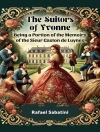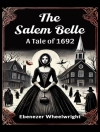In ‘Down the Ravine, ‘ Charles Egbert Craddock, the pseudonym of Mary Noailles Murfree, blends regionalism and local color to paint a vivid portrait of the rural South in the late 19th century. Set against the backdrop of the Appalachian landscape, this novel interweaves themes of love, sacrifice, and the authenticity of community life. Craddock’s prose is marked by its lyrical quality, rich descriptions of nature, and detailed characterizations that evoke a deep sense of place, immersing readers in a world where the natural environment is as much a character as the people themselves. The novel’s narrative style evokes the oral traditions of the South, paying homage to the area’s folklore and history while exploring the lives of ordinary individuals navigating the complexities of human relationships and societal expectations. Craddock’s background as a Tennessee native profoundly informs her writing, bringing an insider’s perspective to the stories of Southern Appalachian folk. Her own experiences and keen observations of rural life allow her to authentically capture the struggles and joys of her characters. As a pioneering woman author in a predominantly male literary landscape, Craddock’s work also subtly challenges the conventions of her time, presenting a nuanced examination of gender roles and social dynamics within rural settings. ‘Down the Ravine’ is a compelling read for those interested in regional literature and the intricate tapestry of Southern life. It invites readers to immerse themselves in the beauty and difficulty of the Appalachian experience, offering both escapism and profound insight. Whether you are a seasoned fan of Southern literature or new to the genre, Craddock’s poignant storytelling will leave a lasting impression, making this novel a noteworthy addition to any literary collection.
Circa l’autore
Charles Egbert Craddock is the pen name of Mary Noailles Murfree (January 24, 1850 – July 31, 1922), an American author recognized for her novels and stories that vividly brought to life the people and customs of the Cumberland Mountains of Tennessee. She initially adopted the male pseudonym to mask her gender and ensure her works were taken seriously in the male-dominated literary world of the late 19th century. Murfree’s literature often falls into the local color movement, with ‘Down the Ravine’ (1885) showcasing her characteristic blend of regional dialect and detailed descriptions of the Appalachians. This novel, like much of her work, invites readers to explore the complexities of rural Southern life, where nature, tradition, and human relationships intertwine. Murfree’s writings display a unique narrative style that combines a deep appreciation for her setting with an astute analysis of her characters’ inner lives, effectively painting a picturesque and enduring image of Southern Americana. Despite the initial need for a pseudonym, Mary Noailles Murfree’s true identity was revealed in 1885, allowing her to gain recognition under her real name. Her work remains a substantial contribution to the literary depiction of American pastoral life and continues to be studied for its cultural and historical significance.












